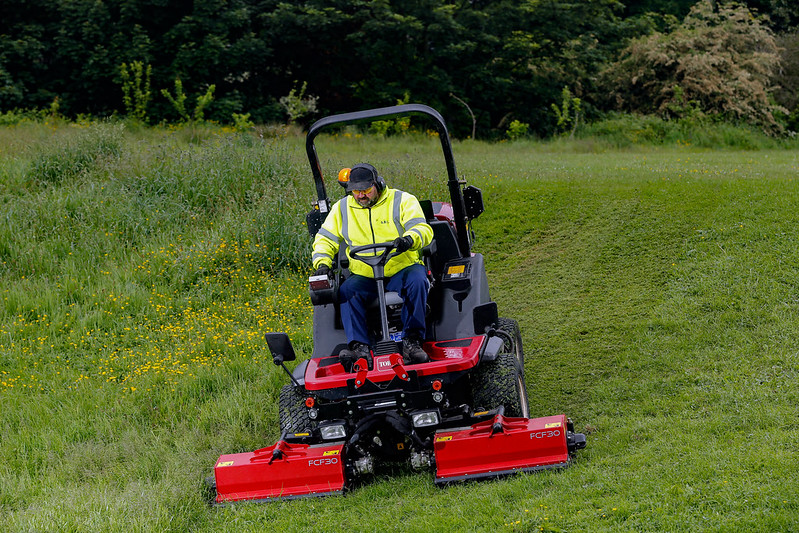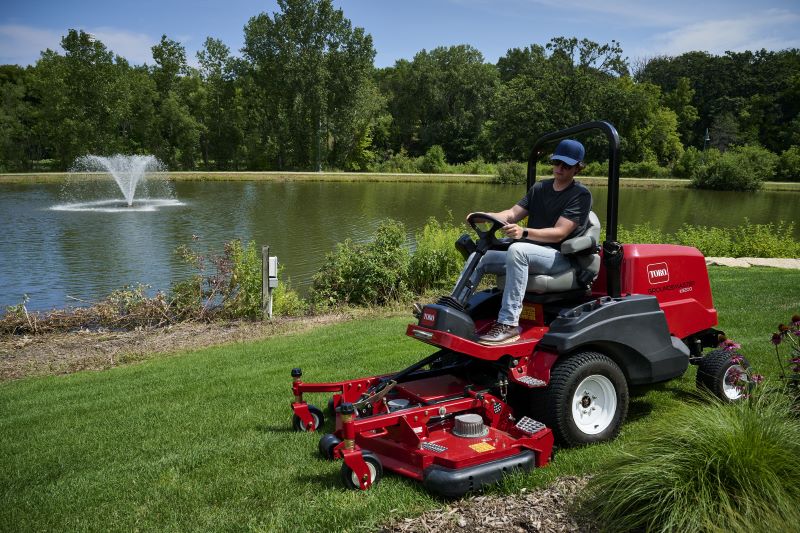What is sustainable groundscare?
Inside sustainable groundscare
There are no official guidelines on what effective measures are in sustainable groundscare and many clubs and businesses do not follow the same practices. However, there are a few areas we can all agree are easy to implement and bring great environmental benefits.
Using an accumulation of our own research, industry insights and speaking to our contacts across the sector, we’ve been able to pull together some quick wins businesses can implement to contribute to sustainable groundscare.
1. Mowing practices
Obviously when grass needs cutting, it needs cutting, there’s no avoiding that, but there are eco-friendly practices that can help you to go green when it comes to mowing.
A higher cut for a sustainable landscape
It may seem simple but maintaining a taller cut of grass is a great step to take towards groundskeeping in a more sustainable way.
Increasing grass height by even an 1/8 inch adds around 300 square feet of energy collecting leaf surface for every 1,000 square feet of grass.
In the first instance, a greater ability to produce its own food means grounds will require less supplementary nutrients and chemical interventions that can have adverse effects on the surrounding landscape.
But on a wider scale, longer grass blades means more photosynthesis, which means more carbon sequestration. This is where plants absorb carbon dioxide from the atmosphere during photosynthesis and store carbon in their tissue and roots, instead of it existing in the atmosphere where it can contribute to global warming.
Leave your clippings
Another easy way to engage with sustainable groundskeeping practices is to leave the grass clippings on the area that’s been mowed. Grass clippings contain essential nutrients such as nitrogen, phosphorus, and potassium, and when left on the grass, these clippings decompose over time, releasing nutrients back into the soil.
By leveraging the nutrient content of grass clippings, groundskeepers and landscapers can reduce their reliance on chemical fertilisers, contributing to a more environmentally friendly and sustainable approach to groundscare.
This method not only benefits the immediate health of the grass but also supports the overall ecological balance of the landscape, fostering a harmonious relationship between the lawn, the soil, and the surrounding environment.
Sustainable landscaping initiatives
The new year provides the perfect opportunity to set new goals and try new things, but spring is right around the corner providing ample opportunity to engage in collective sustainable groundskeeping practices.
No Mow May is a national campaign that encourages private homeowners, professional landscapers and groundskeepers alike to refrain from cutting their grass areas in the month of May. Instead grass is left to grow out to promote and preserve biodiversity, fostering a habitat for essential pollinators and benefitting the broader ecosystem.
Outside of No Mow May, groundscare professionals can help to promote biodiversity in their regular mowing practices by engaging with rewilding efforts and maintaining pollinator pathways.
This includes allowing native plants and wildflower meadows to flourish and leaving grass to grow longer when mowing. Instead, groundskeepers may turn their attention to maintaining the bordering landscape, framing the wild areas and cutting any surrounding pedestrian areas to keep them managed and safe in their new wilder form.
Flail mowers with interchangeable cylinder attachments such as Toro’s LT-F3000 are ideal for letting groundskeepers be intentional with switching between mowing the longer grass of a rewilded area and the precision needed for the surrounding frame.

2. Alternative power sources
The incorporation of alternative fuel sources in sustainable groundscare practices represents a pivotal shift towards environmentally conscious landscaping. Utilising alternative fuels, such as battery-power, biodiesel, ethanol, or compressed natural gas (CNG), minimises the carbon footprint associated with traditional petrol or diesel-powered equipment.
According to the European Environment Agency, the use of alternative fuels in machinery significantly reduces greenhouse gas emissions, contributing to overall air quality improvement. Biodiesel, for instance, derived from renewable sources like vegetable oils, offers a cleaner combustion process and decreased emissions of particulate matter.
Going electric
It shouldn’t come as a surprise that exchanging diesel-powered engines for hybrid or all-electric counterparts is a great strategy for groundskeepers wishing to foray into the practice of sustainable landscaping.
The car industry is well underway with the introduction of electric vehicles and the infrastructure to support them, and the focus is now to strive for carbon neutrality across the board with buggies, mowers, tractors and utility vehicles to follow the same green path.
Green mowers produce zero emissions, so using electric machinery powered by lithium-ion for example contributes to decarbonisation goals by eliminating the CO2 that would otherwise be produced by a diesel model — and with no hydraulic fluid leaks to go alongside, battery operated mowers are more environmentally sustainable on just about every front.
Now the groundscare market can easily venture into the age of electrification with Toro’s Groundsmaster e3200, the industry’s first all-electric out-front rotary mower. Equipped with Toro’s proprietary HyperCell battery technology that can be configured with up to 17 HyperCell batteries for heavy-users in more demanding applications to achieve all-day continuous mowing time. And with a 3.3 kW on-board charger, it can be charged with ease overnight so it’s ready to go again by the next morning.

3. Recycling
The waste your ‘office’, i.e. the great outdoors, produces is just as applicable for recycling. Organic materials that may have previously been deemed as groundskeeping waste, can, instead of being sent to landfills where they contribute to the generation of greenhouses gases, and be repurposed into nutrient-rich compost that enhances landscape soils and mulch for garden plantings.
Aside from saving them from landfill, the use of repurposed organic material creates sustainable landscapes by acting as a natural soil conditioner, improving its structure, water retention and nutrient content without the need for a synthetic fertiliser or chemical amendments that can have negative environmental impacts.
Composting organic material also allows for the sequestration of carbon in the soil, with healthy soils acting as a carbon sink, playing a role in the global effort to reduce carbon emissions.
In comparison to other techniques we’ve covered, this may seem small fry but the little changes add up and it really is true that when it comes to sustainable groundscare, every little helps.
Essentially, groundskeeping sustainably is a balance between the way groundskeepers work and the practices they engage with as well as the tools they use. Combining them is a great way to get started, and the good news is Reesink Turfcare can help.
Focused on providing sustainable, environmentally friendly machinery alternatives that do not compromise on the quality of the work, while reducing our customer’s carbon footprint, our current offering includes products powered by propane, biodiesel and advanced batteries made more efficient by incorporating electronic fuel injection, hybrid and electric technologies.